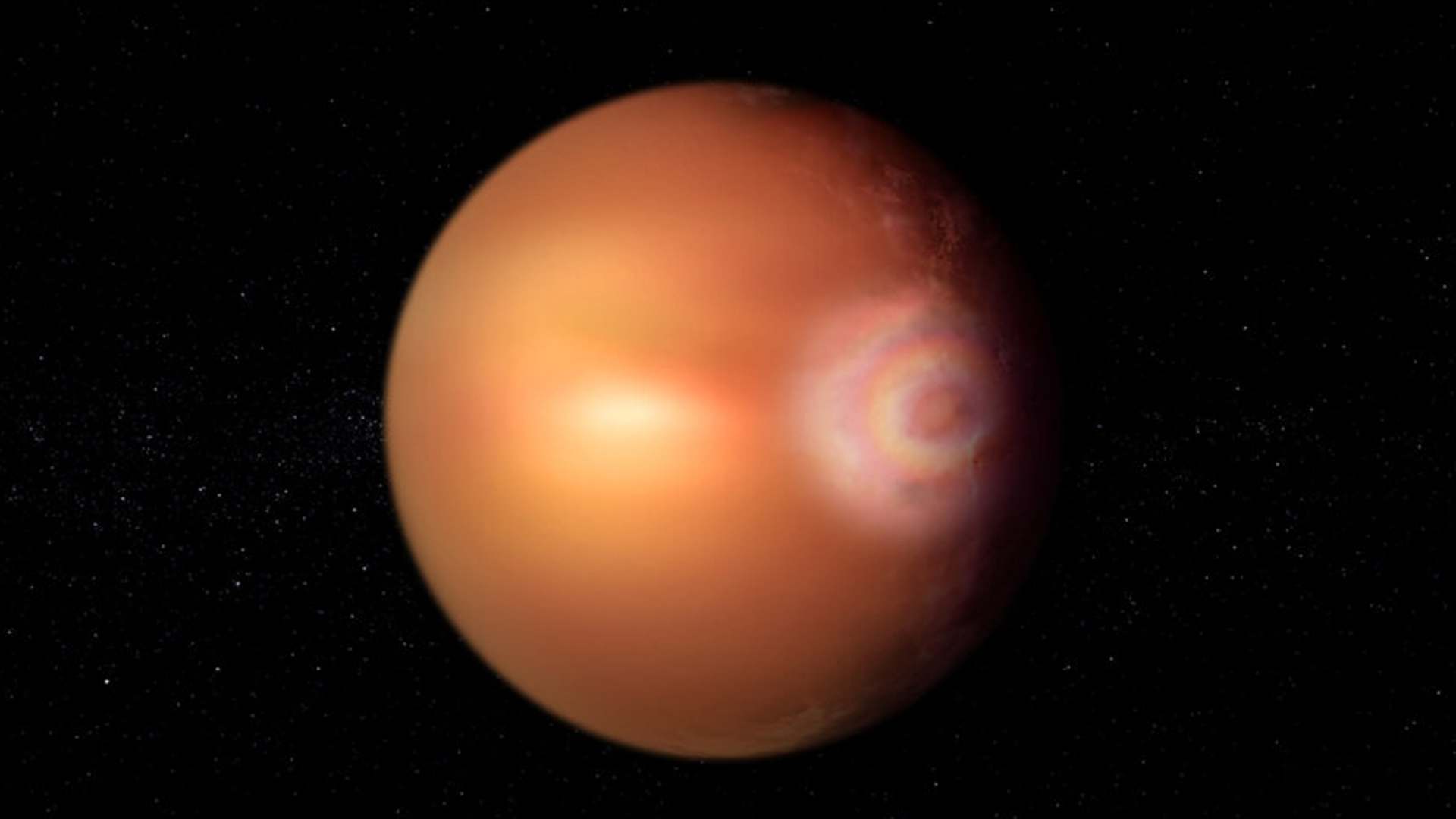Strange light spotted over distant 'hell planet' may be 1st rainbow 'glory' found beyond our solar system
New data suggest that exoplanet WASP-76 b could harbor a massive, rainbow-colored light show known as a "glory." Until now, this phenomenon has been seen only within our solar system.

Astronomers think they've detected an extremely rare, luminous phenomenon known as a "glory" in the hellish atmosphere of a distant exoplanet. If the finding is confirmed, it would be the first time one of these rainbow-colored light shows has been spotted outside the solar system.
The exoplanet, WASP-76 b, is located around 637 light-years from Earth. It was first discovered in 2013 by the Wide Angle Search for Planets (WASP) project, which looks for planets as they pass between, or transit, their parent star and Earth.
The exoplanet — which may have cannibalized a smaller, Mercury-size neighbor in the past — is around 90% the mass of Jupiter but about twice as wide. It is unusually close to its home star, orbiting around 20 times closer than Mercury orbits the sun. As a result, it takes WASP-76 b just 1.8 days to complete one trip around its star.
In 2020, researchers discovered that the planet is tidally locked, meaning one side is always facing its home star, just as the moon faces Earth. As a result, the exoplanet's sunlit side is around 4,350 degrees Fahrenheit (2,400 degrees Celsius), while its dark side is slightly cooler. Researchers think that, due to this subtle temperature difference, metals like iron could be vaporized on the light side and then condense into rain on the dark side.
In a new study, published April 5 in the journal Astronomy & Astrophysics, researchers examined new data on WASP-76 b collected by multiple spacecraft, including the European Space Agency's (ESA) Characterising Exoplanet Satellite and NASA's Transiting Exoplanet Survey Satellite. This analysis revealed a "bright spot" of light coming from the exoplanet's eastern limb, along the boundary where the planet's permanent day and night meet.
The researchers think this bright spot could be a "glory." This rare visual phenomenon, when seen on Earth, is normally made up of concentric rainbow rings forming a giant circle.
Related: 10 extreme exoplanets that are out of this world
Get the world’s most fascinating discoveries delivered straight to your inbox.
On Earth, glories are formed when sunlight squeezes through small holes between water molecules in clouds or fog, bending the light and separating it into its individual wavelengths. This is similar to how rainbows work, except with glories, the light is bent by diffraction, which is when light is bent around an obstruction, instead of refraction, or when light is bent as it passes through different mediums.
"It requires very peculiar conditions," study lead author Olivier Demangeon, an astronomer at Portugal's Institute of Astrophysics and Space Sciences, said in a statement. "First, you need atmospheric particles that are close-to-perfectly spherical, completely uniform and stable enough to be observed over a long time." The observer also has to be at just the right orientation to be able to see the diffracted light, he added.
However, it is possible that, if given similar conditions, the effect might happen on other planets. We have already seen this phenomenon elsewhere in the solar system, on Venus, according to ESA.
Researchers are unsure exactly how a glory would form on WASP-76 b. But given that the bright spot has been visible across multiple years, the medium that diffracts the light is likely a lot more stable than the water vapor in our planet's atmosphere.
However, the glory theory is based on an "incredibly faint signal," so it's not certain, Matthew Standing, an exoplanet scientist at ESA who was not involved in the study, said in the statement.
"Further proof is needed to say conclusively that this intriguing 'extra light' is a rare glory," Theresa Lüftinger, an ESA astrophysicist who was not involved in the study, said in the statement. We will likely need more powerful instruments, like those on the James Webb Space Telescope, to get this proof, she added.
If it is a glory, researchers could use the data to hunt for more extrasolar examples of these light shows in the atmospheres of other exoplanets to learn more about this puzzling phenomenon.

Harry is a U.K.-based senior staff writer at Live Science. He studied marine biology at the University of Exeter before training to become a journalist. He covers a wide range of topics including space exploration, planetary science, space weather, climate change, animal behavior and paleontology. His recent work on the solar maximum won "best space submission" at the 2024 Aerospace Media Awards and was shortlisted in the "top scoop" category at the NCTJ Awards for Excellence in 2023. He also writes Live Science's weekly Earth from space series.



